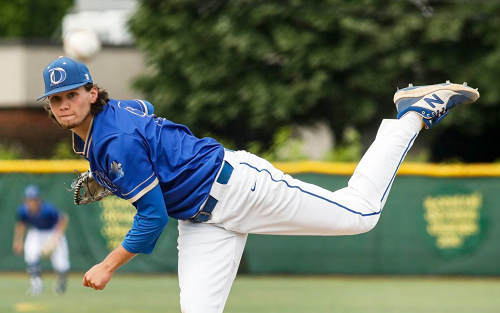
George Mason commit Shaun O’Keeffe is having an exceptional spring senior season at Donovan Catholic High School in Toms River, New Jersey. In 36 IP, the lefty has registered a 1.34 ERA with 62 strikeouts and an Ocean County Championship for Donovan Catholic. Shaun began training with us last summer as a part of the Summer Throwing Program and continued his training throughout the fall and winter leading up to the spring season. His velocity has improved by 4-6 mph, from sitting 81-83 to 85-87 mph.
How did he do it?
His training with us began with an initial assessment, which included the following:
-
- Video analysis
- Motion capture analysis
- Movement screen
- Strength testing
- Power testing
Following his assessment, we assembled a comprehensive plan to prepare Shaun for the off-season leading into this year’s spring.
Video Analysis and Motion Capture Analysis
Every athlete in our summer program is put through a video and motion capture analysis. The analysis looks at over 60 different disconnects, from arm action to trunk movement to lower half movement patterns. It leaves no stone unturned, especially when it comes to including metrics that generally can’t be seen by the naked eye. With pitching mechanics, more often than not, we see issues later in the delivery that are compensatory patterns created by disconnects that happen earlier and Shaun was no exception.
Video Analysis – The video analysis exposed a few areas where Shaun could improve his pitching mechanics.
-
- Insufficient Pelvic / Glute Engagement and Timing – Much of this disconnect is about the pitcher’s weight distribution on the back leg and foot and finding the appropriate amount of hinge for each individual athlete. This is key for helping to avoid pushing or vaulting off the rubber as well as maintaining posture into foot plant (FP). The longer we can keep the rear glute engaged, the longer (and later) we can create lateral force and sequence energy up the chain into the trunk and ultimately the arm. In Shaun’s case, his inability to properly hinge was the first step. Addressing his ankle mobility and hip mobility, which we will discuss later, also would allow him to get into a more stable and efficient position with his lower half.
- Smooth arm path w/ momentum – Having a “loose, whip-like” arm will help Shaun throughout the throw instead of muscling up into release. Most times when the arm is tense, it can lead to the inability to properly load the scap and get into an efficient “flipped up” position at FP. A lack of scap load and a “late” arm, could possibly lead to a decrease in ER of the shoulder during the throw.
Motion Capture Analysis – The following is a summary of Shaun’s primary disconnects from his mocap report with definitions for each further below:
-
- Max front knee angular velocity
- Max pelvis angular velocity
- Max torso-pelvis velocity
In regard to Shaun’s mocap, the big players here were his lower half angular velocities being extremely low. Seeing lower half angular velocities that are low, paired with throwing arm’s angular velocities that are in range can be a key indicator that a pitcher is overusing their arm. The following is a brief summary of this angular velocities from his initial motion capture.
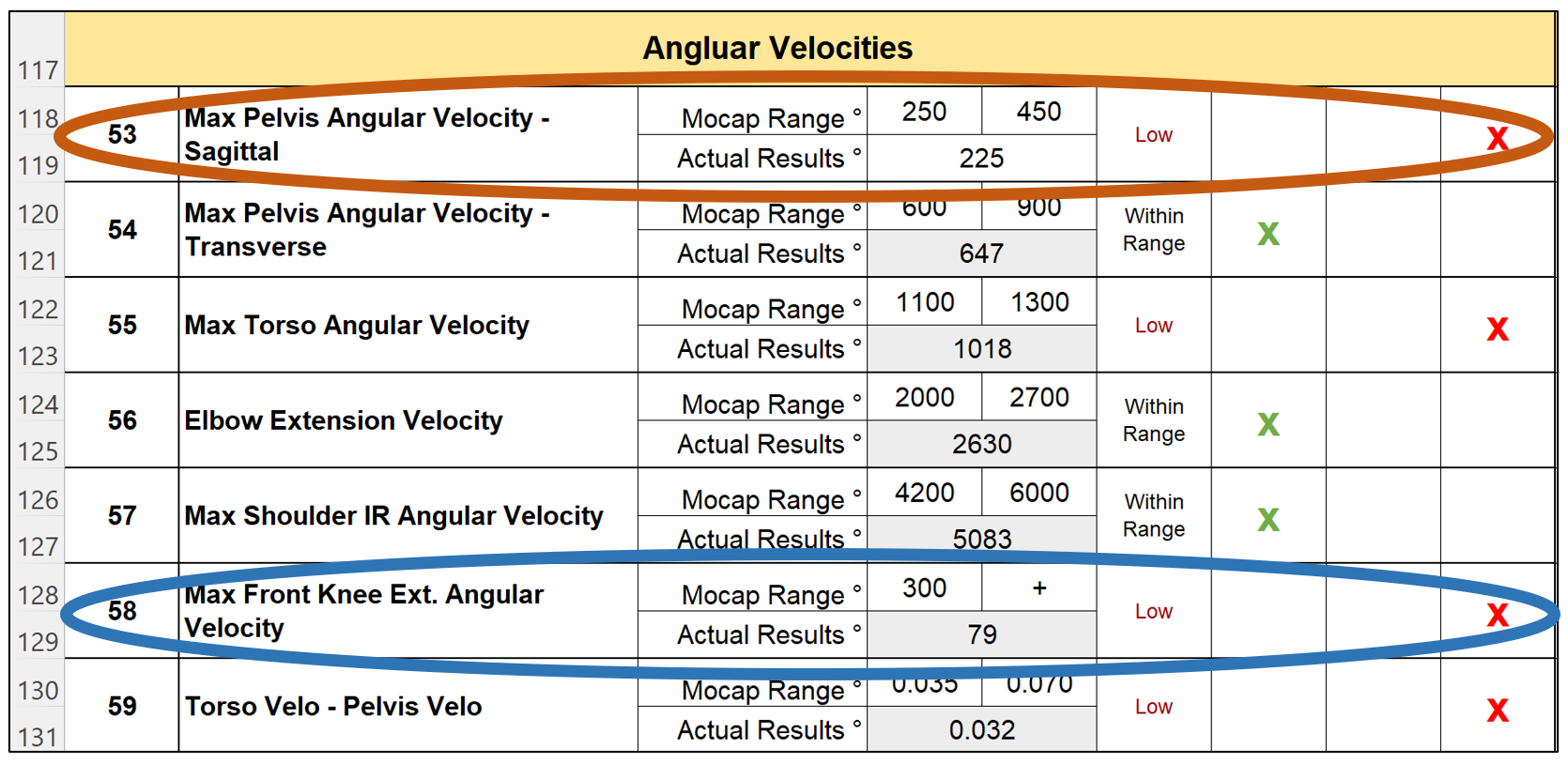
Going through the throw with the arm taking the brunt of the force, could put the pitcher at risk for injury. So, increasing Shaun’s strength and power, which will be discussed more later, could potentially affect these velocities in a positive way. This would allow him to generate more force through his lower half instead of trying to create the force with his arm alone.
Movement Screen
The movement screen is a physical blueprint for what the body can and can’t perform during a delivery. Putting strength aside, many disconnects often come back to topics identified in the movement screen. Shaun’s movement screen highlighted a few focal points that we thought could be affecting his delivery and needed to be addressed:
-
- Insufficient left Hip IR (drive leg)
- Insufficient ankle mobility and strength
- Insufficient core control
Shaun’s insufficient left hip IR, ankle mobility, and core control all were driving factors in his inability to properly hinge when trying to load his lower half on the mound. An absence of hip IR doesn’t allow the athlete to “coil” into the back hip, allowing for a proper hinge/loading pattern.
In addition, a lack of ankle mobility (dorsiflexion), won’t allow the athlete to be able to efficiently get into the hinge pattern long enough to actually load the lower half. As for the core control, the inability to keep an upright posture will cause the athlete to lean forward into their stride phase, generally causing e a more “front heavy” landing and making it more difficult to quickly re-direct ground forces back up the chain.
Below is a snap shot of Shaun’s movement screen relating to his hips, t-spine and shoulders:

Strength and Power Testing
Shaun’s strength testing in both his squat and bench showed a need for improvement in order to bring a balance between his anterior and posterior chain.
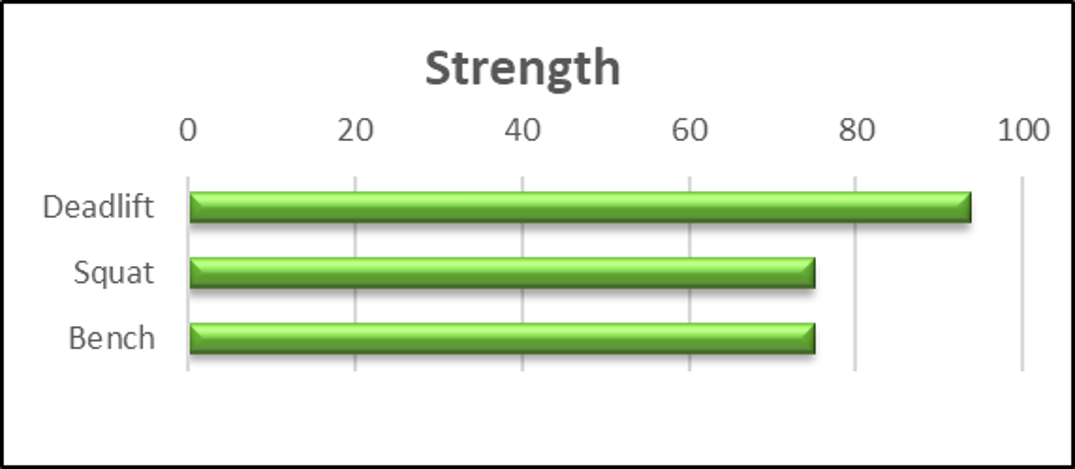
In conjunction with addressing his mobility deficiencies, increasing his strength would allow him to get into more efficient positions on the mound when loading as well as decelerate the lead leg more efficiently at foot plant.
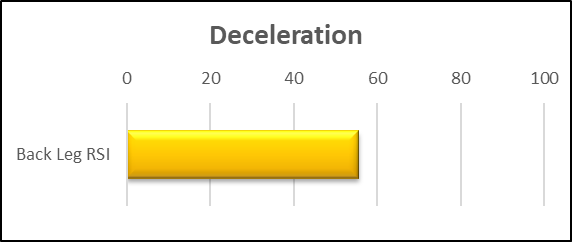
Increasing Shaun’s power output would be the next thing on the list to address. Once higher strength levels were improved, learning how to transfer that strength to power was an important component of his training. By increasing his power output, it could directly affect his low angular velocities that were found in his mocap while helping to distribute the intensity of the throw more to his lower and give his arm less load to carry.
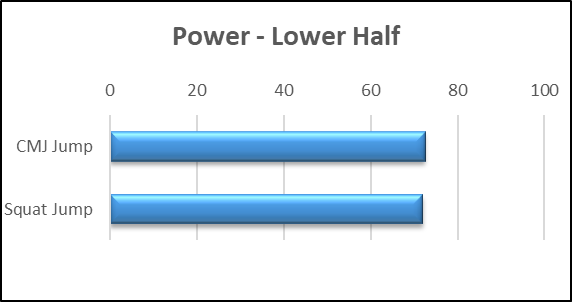
Update
Shaun has worked extremely hard this past year, training both at the facility and on a remote basis. On days he drove to RPP, his drive was over an hour each way. His hard work has paid off immensely. AS highlighted earlier, he has pitched well this spring. In 36 IP he registered a 1.34 ERA with 62 strikeouts en-route to a county championship for Donovan Catholic. In addition, his velo has jumped from sitting 81-83 mph to 85-87 mph. With another summer of training approaching, the sky is the limit for this guy as he prepares for his first fall at George Mason.
Video Creds: PBR New Jersey
By Jake Lebovitch, Nunzio Signore and Bahram Shirazi
You live too far to train with us in-house at RPP? You can now train with us on a REMOTE basis.


